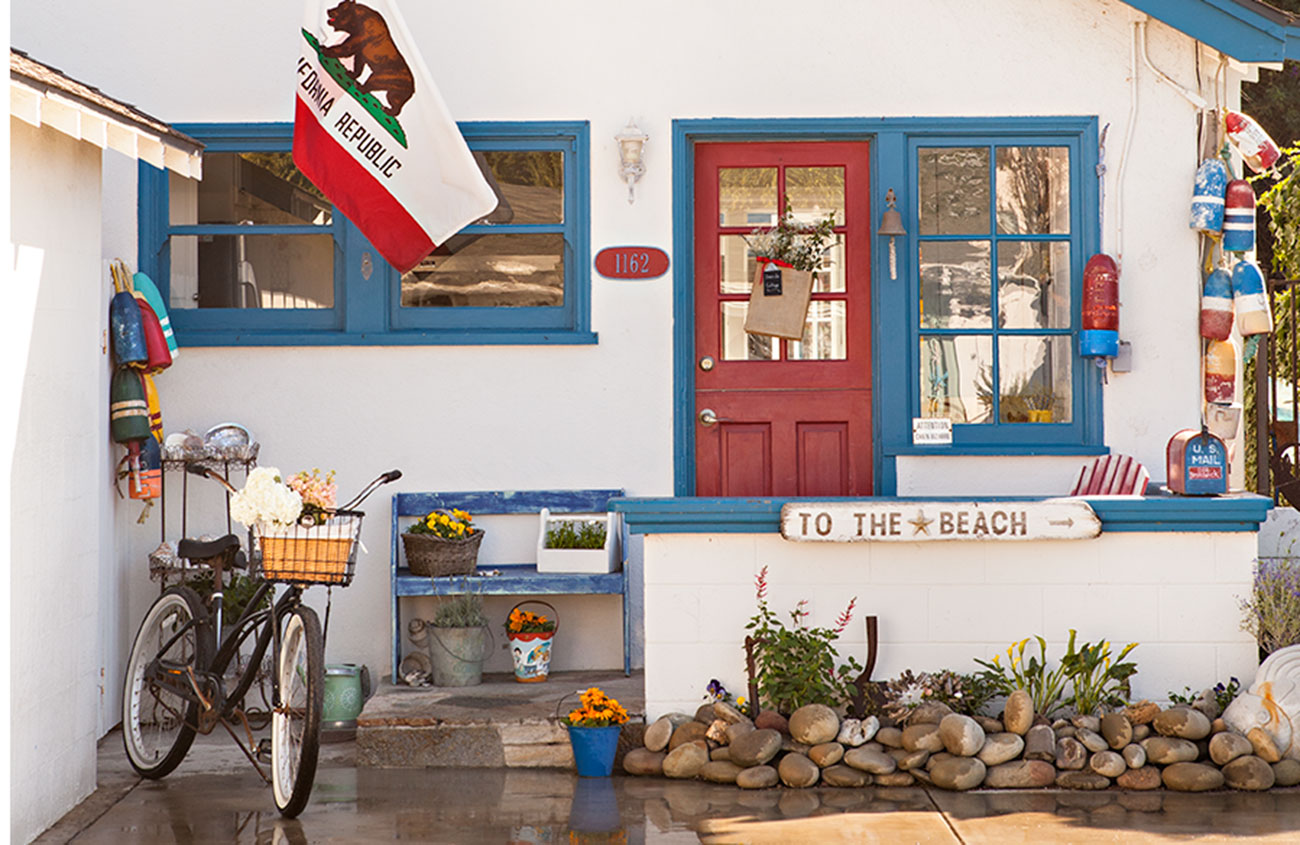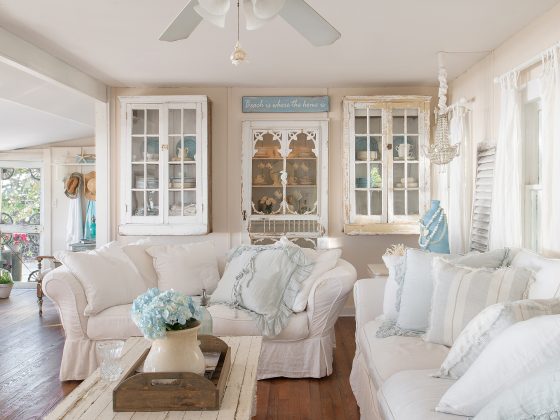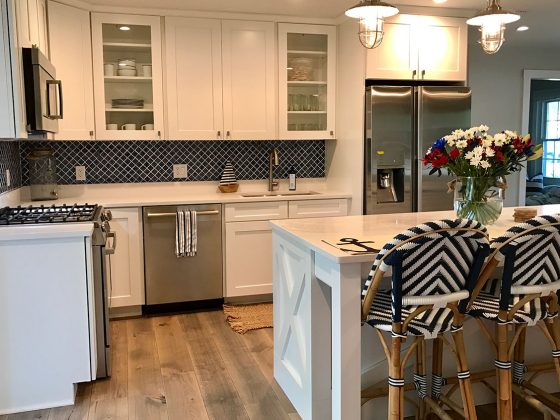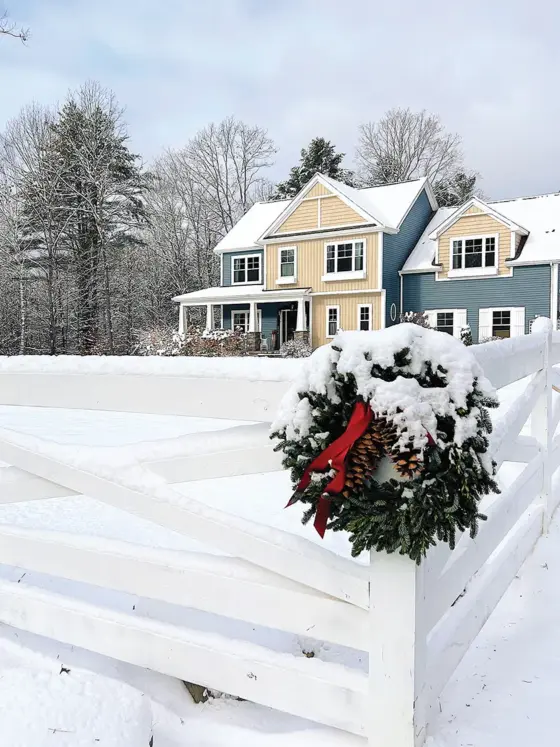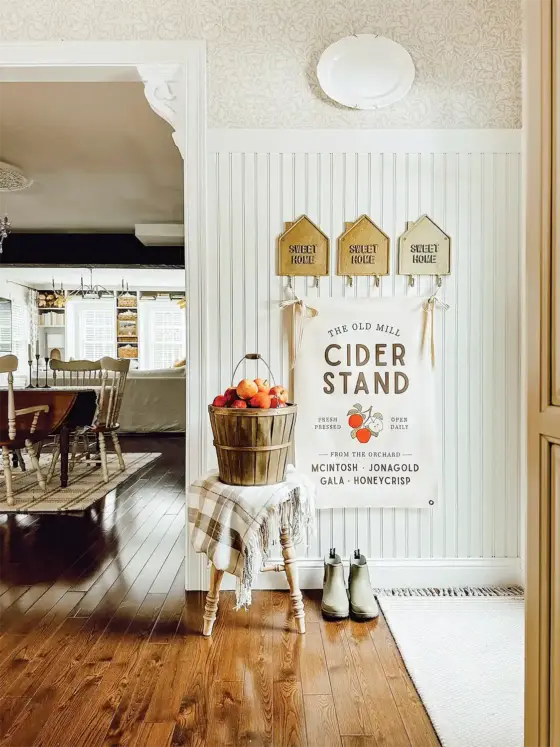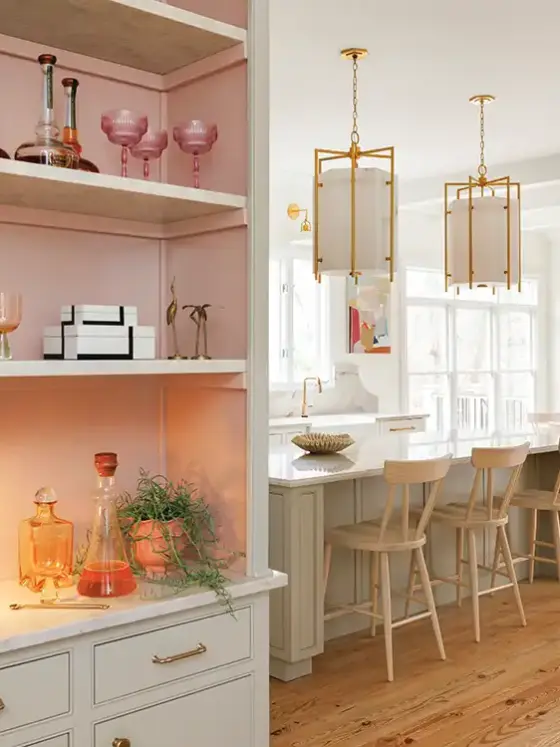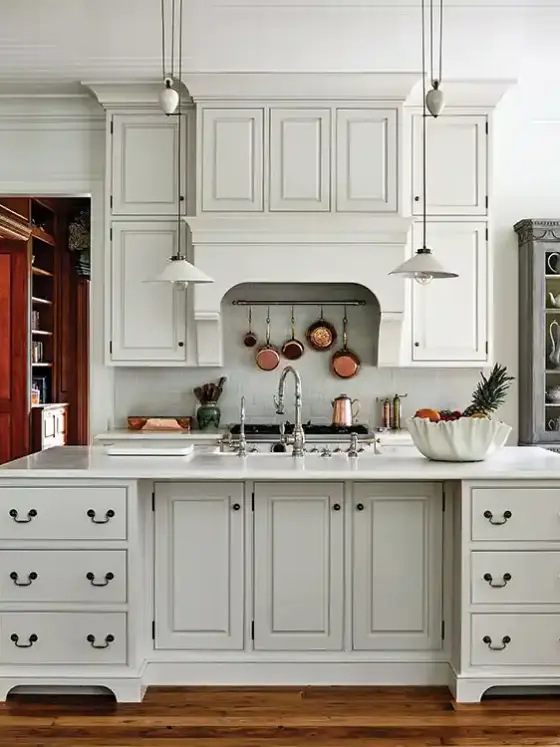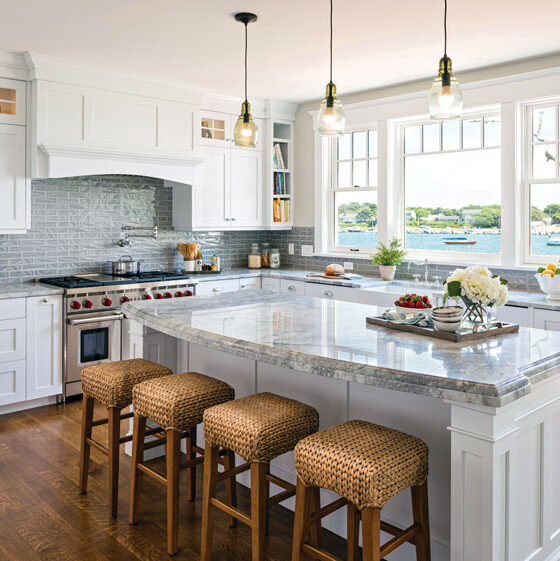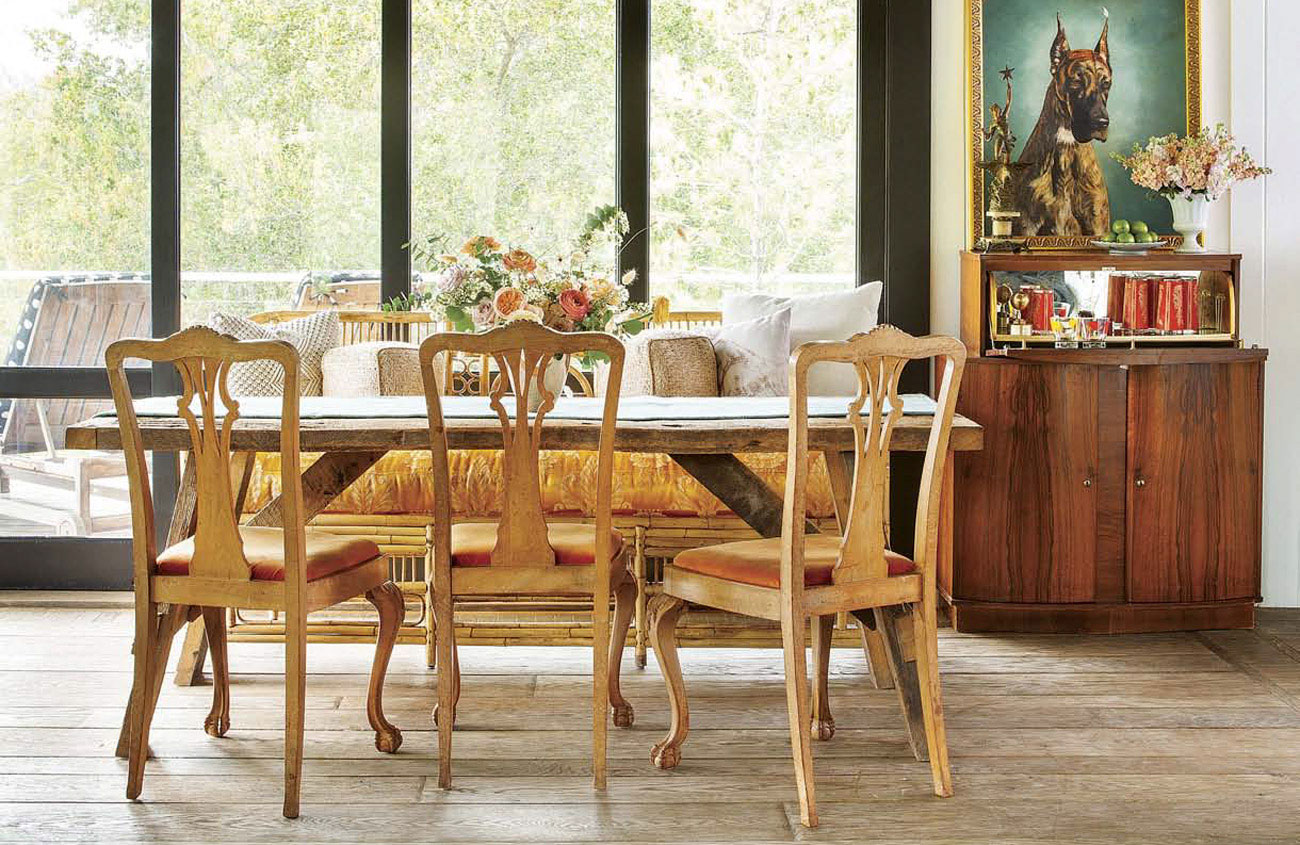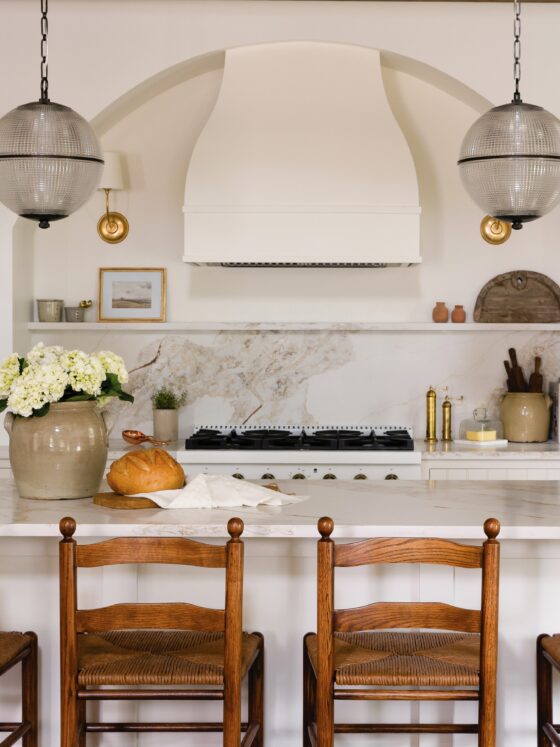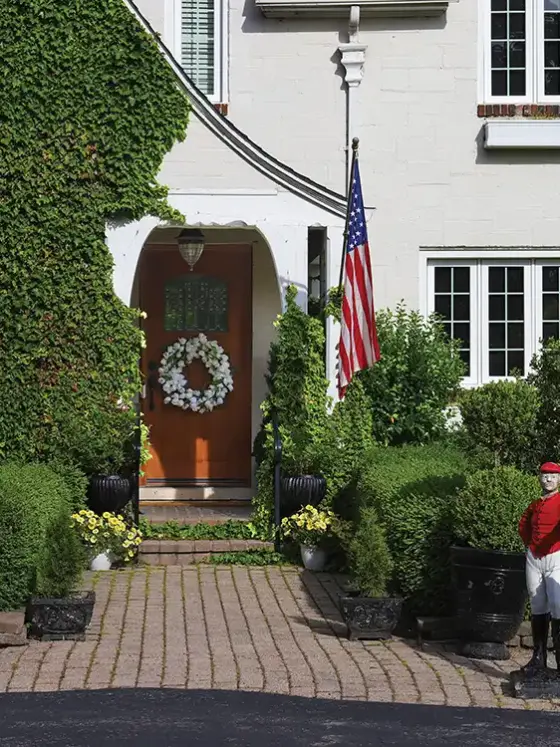A home is many things, but when you treat it like a creative playground, inspiring things happen. And Carol and Steve Cook of Ventura, California, certainly do. Not only is their almost-90-year-old cottage the place they hang their hats, it’s also a gallery to showcase and sell Steve’s artwork inspired by the ocean and their coastal community. Today their beach cottage design style is all about a mix of creative reuse and vintage finds.
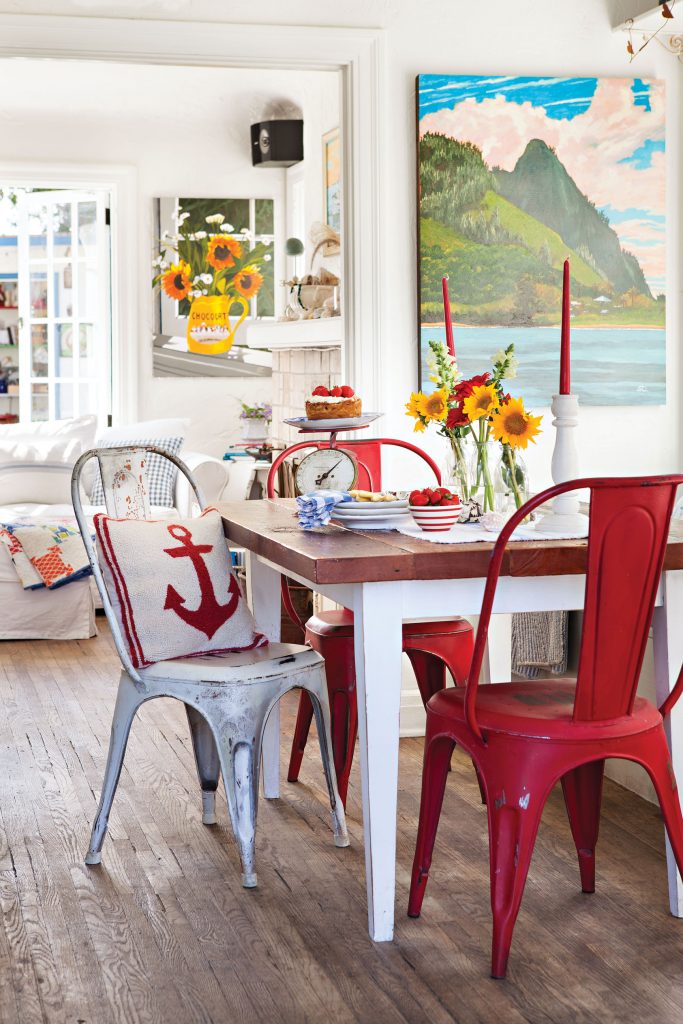
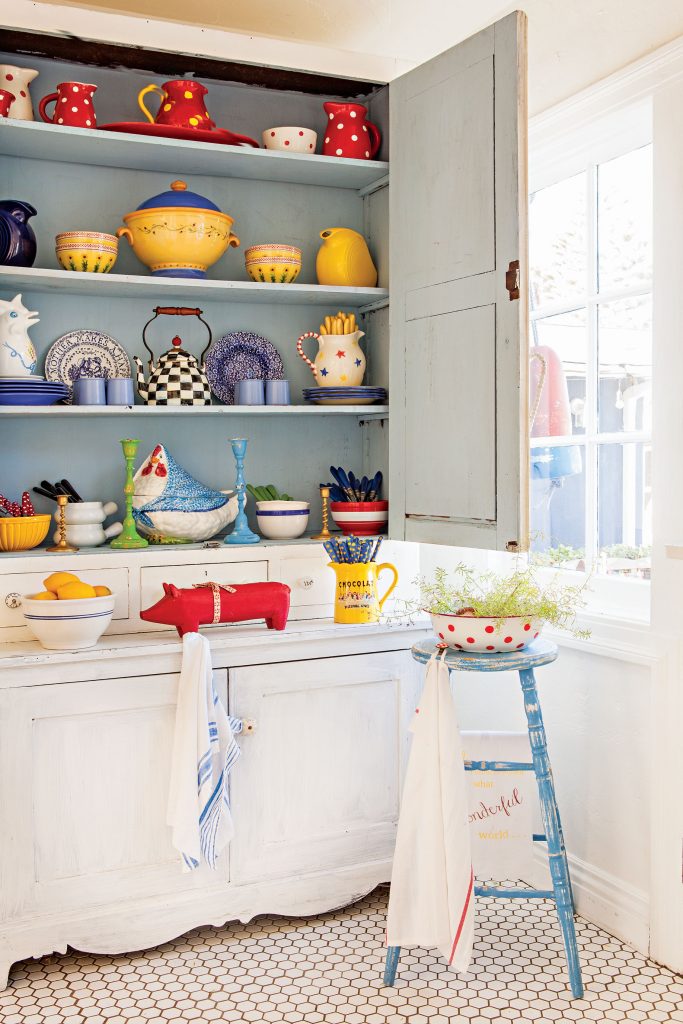
“It is important that a home reflects the personalities and interests of the owners in a way that is comfortable for both the family and their guests, with details that make people want to see more.”
A Little House with History
“I always wanted to live by the sea,” says Carol. “At 16 I was on vacation, and I remember sitting on the beach and thinking, ‘When I’m an adult, I’m going to live at a beach.’” Although the couple have lived near the shore for most of their lives, they settled into their 832-square-foot coastal cottage in 1997 and have enjoyed close proximity to salt air and sandy beaches ever since.
The little beach cottage was built in 1928, one of the first of its kind in the neighborhood. “We assume our home was built by a local farming family to escape the inland heat in the summer. We base our assumption on the lack of storage,” laughs Carol. Living in a small house has its challenges, but the pros outweigh the odd quirks, and the Cooks approach her beach cottage design with a sense of humor and a can-do attitude.
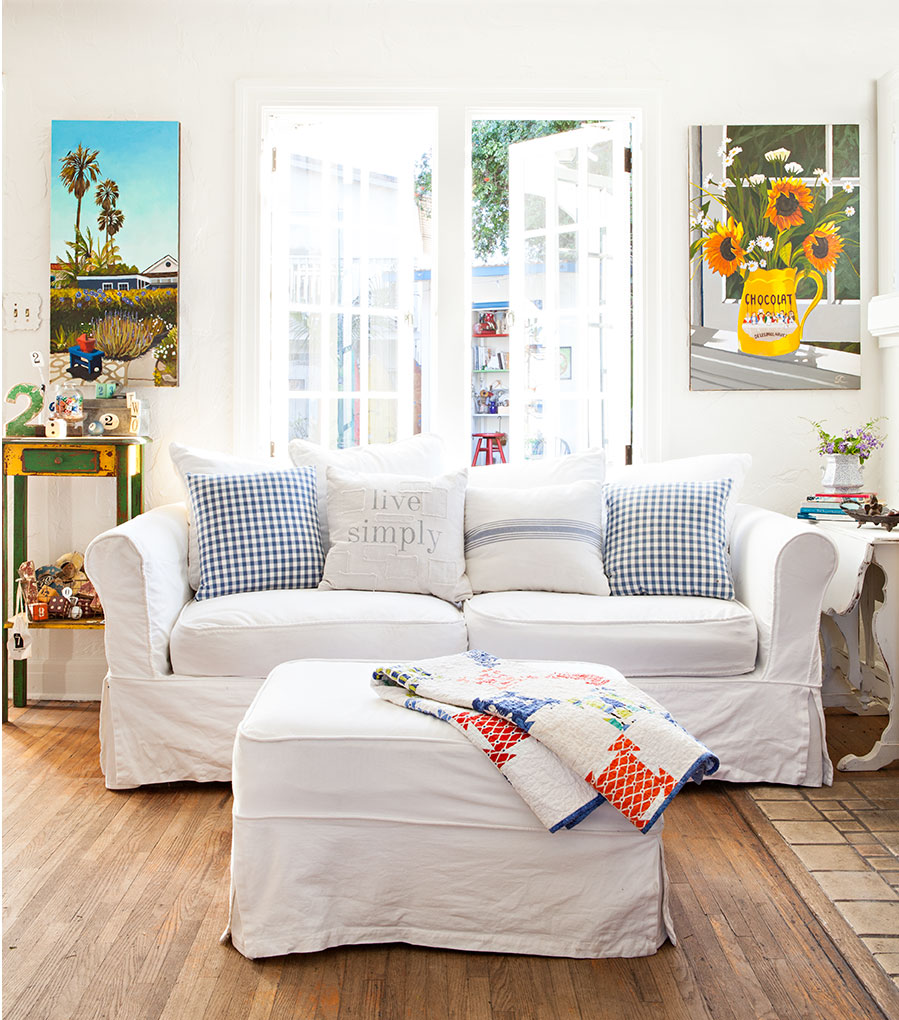
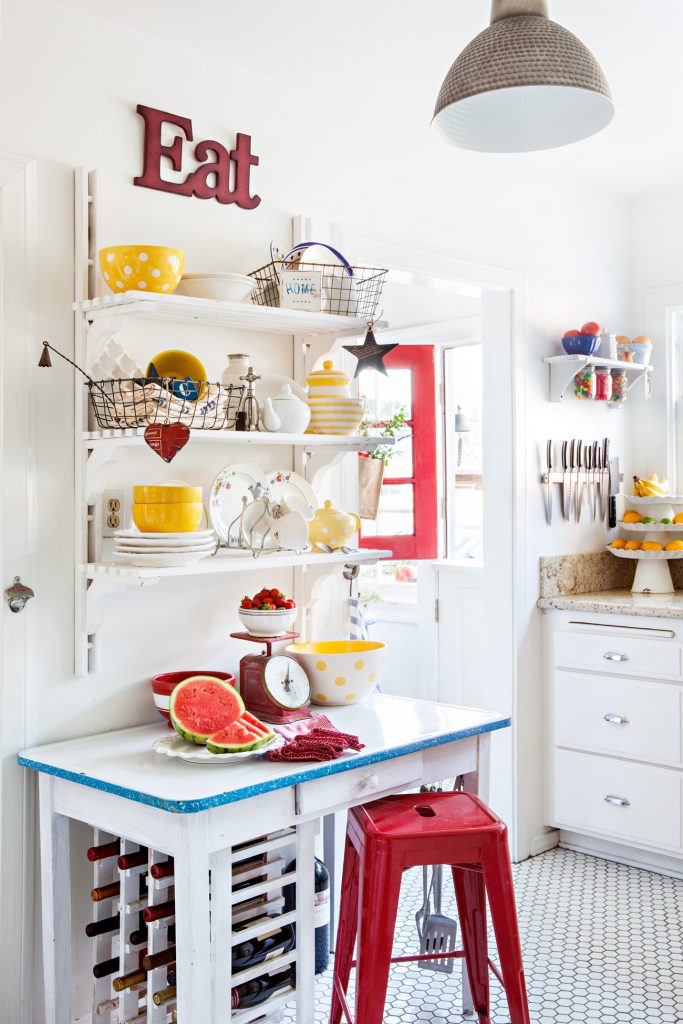
Possibly the oddest of the quirks is that the house was quite literally turned around. “It was designed to face sidewalks that ran down to the sea. Those sidewalks were closed off by the city in the 1960s and the property was deeded to the houses bordering them,” Carol explains. What were once rear-access alleys running behind the homes instantly became neighborhood lanes with this adjustment. Backyards became front yards. Former front yards with formal entries leading from the old sidewalks were fenced off as new backyards. Since then, most of the original cottages have been torn down and replaced with larger, luxury beach houses built to suit the new layout. But the Cooks love their little house, so rather than tear it down to rebuild, they decided to take on renovations to make a functional entry and add curb appeal.
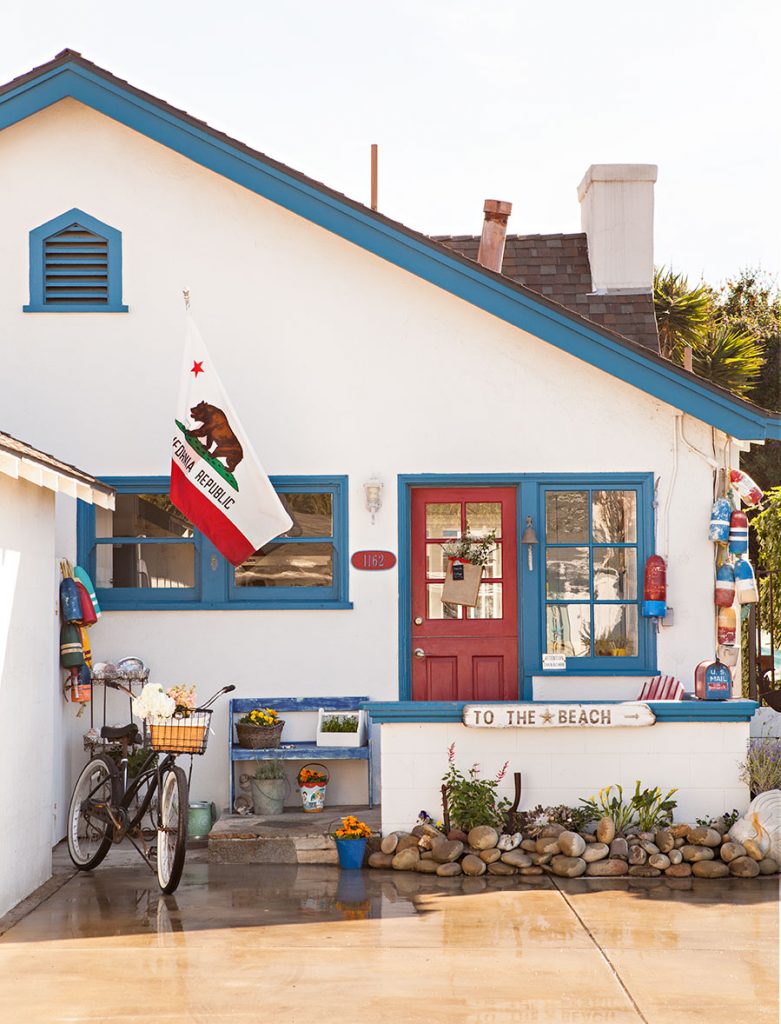
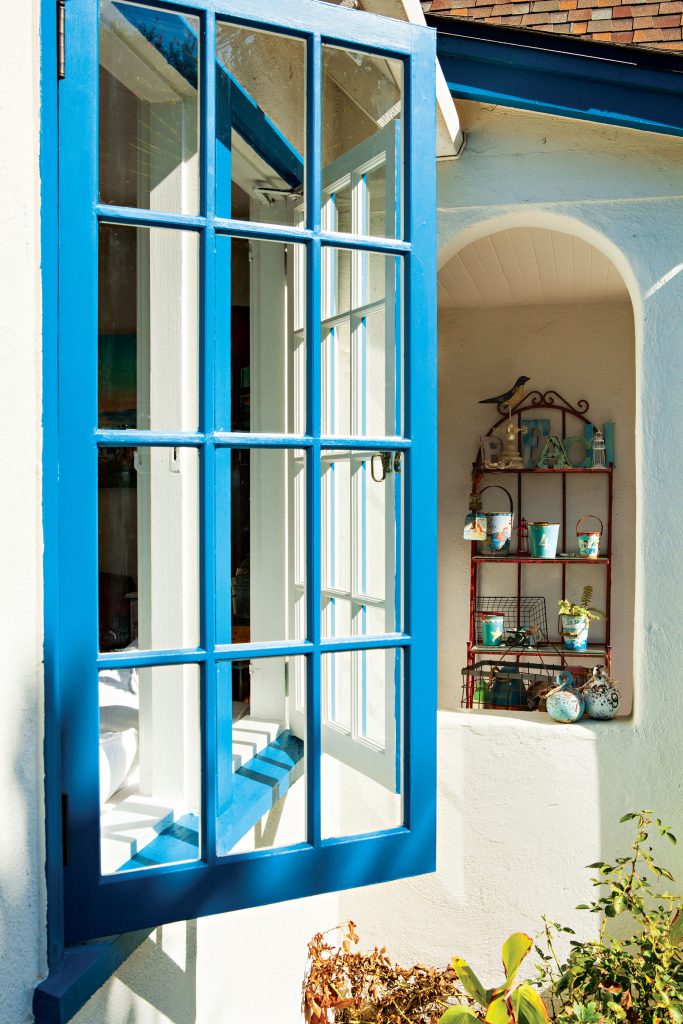
Renovations Required
These days, visitors approach the beach cottage by what was originally a back door to the rear-access alley. “When we bought the house 20 years ago, that red door opened right onto our laundry room with the washer, dryer and water heater,” says Carol. The couple decided to build a more welcoming entry by removing the wall that separated the laundry room from the dining area. This decision added precious space to the dining room, and now guests are greeted by a hospitable setting.
“It really opened up the house, but it’s also been a challenge to create curb appeal from what is obviously a back door,” Carol says. The Cooks, however, have arranged a charming exterior with bold blue trim, a cherry-red Dutch door and items they found at their local beach. From a lifetime of beachcombing, Carol and Steve have amassed quite a collection of shells, sea glass, driftwood, net buoys and even a wooden oar. Many of these finds are used as raw materials for artistic décor pieces throughout their home. “We love the beach, and it’s obvious to anyone who walks down our lane,” she says.
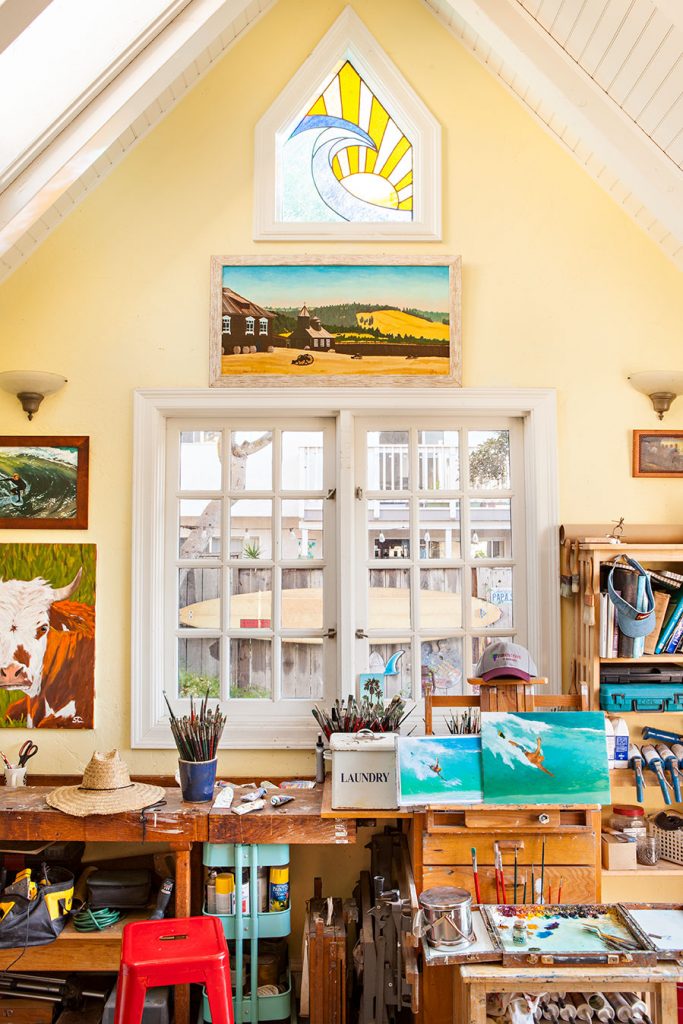
When Steve took up painting full time in 2000, the Cooks added a studio so he could have his own workspace. The recent addition matches the rest of the home’s exterior with its blue trim and timbering. The inside architecturally echoes the home’s exterior with mullioned windows, but it also has an original stained glass window that Steve himself designed. The rest of the décor is as one might expect from an artist in the midst of creation, complete with paintbrushes, easels, and works in progress.
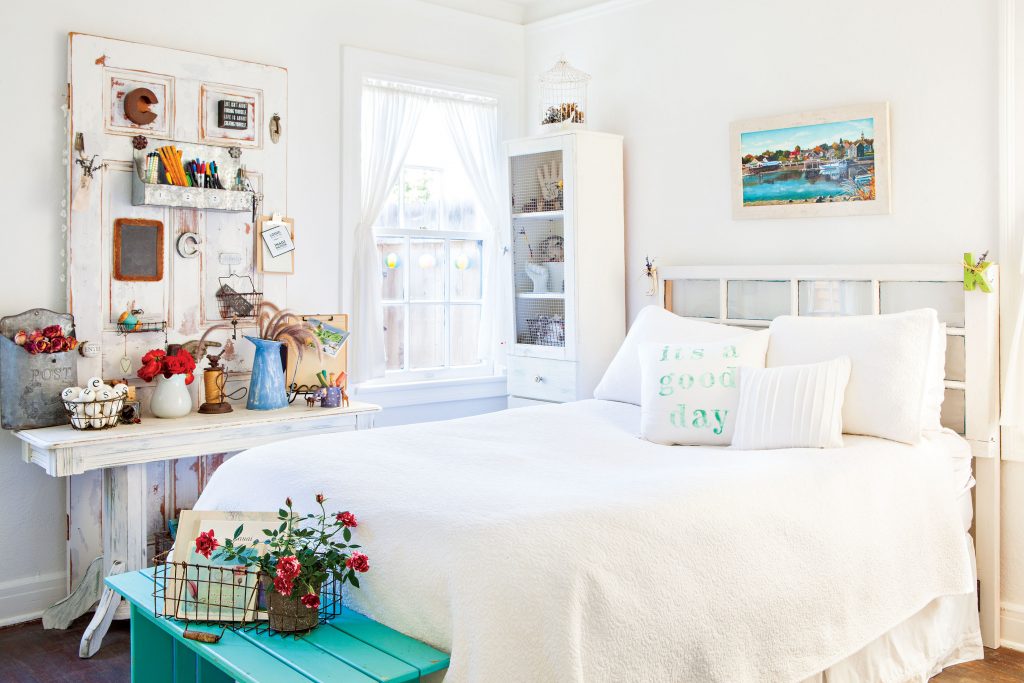
The same shade of yellow in the studio once covered every room in the house, but as demand for Steve’s art increased, Carol saw the need to better accommodate the paintings in their home gallery. “The yellow didn’t work,” she remembers. “It caused some of his paintings to blend into the walls, so we had the interior painted white. Steve is known for his use of color and his work pops against the white. Oddly though, his studio remains yellow. I think he hates to give up the painting time to have it redone,” Carol says.

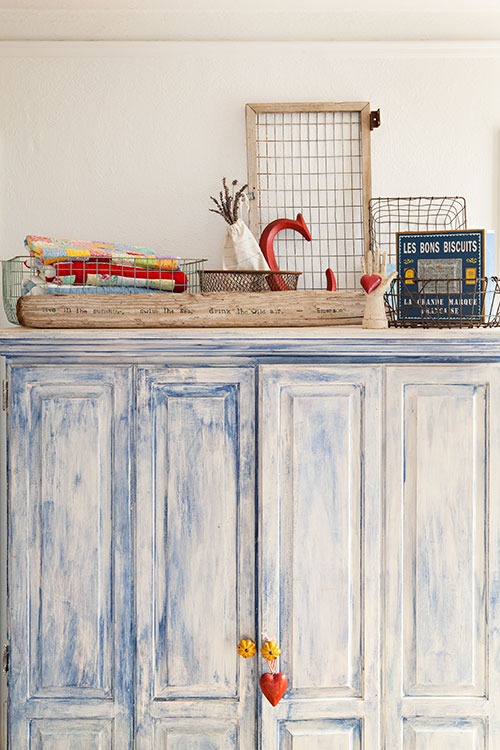
A Gallery to Call Home
Throughout their beach cottage, Carol’s vintage style and love of bold primary colors is perfectly paired with Steve’s colorful nostalgic artwork. “He calls this house his muse,” she says. With plenty of natural light, lush outdoor spaces and Carol’s design savvy, it’s easy to see why.
She loves the sentimental meanings and history behind vintage furnishings and accessories, like her grandparents’ enamel-topped table in the kitchen and the bright red hospital cart turned side table in the living room. “It is important that a home reflects the personalities and interests of the owners in a way that is comfortable for both the family and their guests, with details that make people want to see more,” she advises.
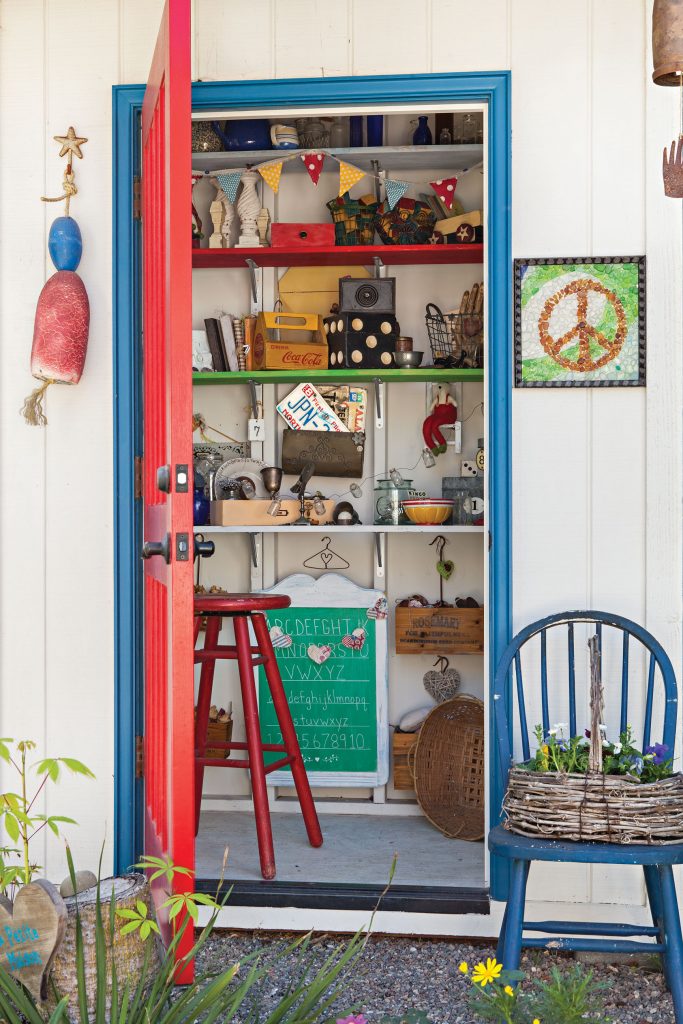
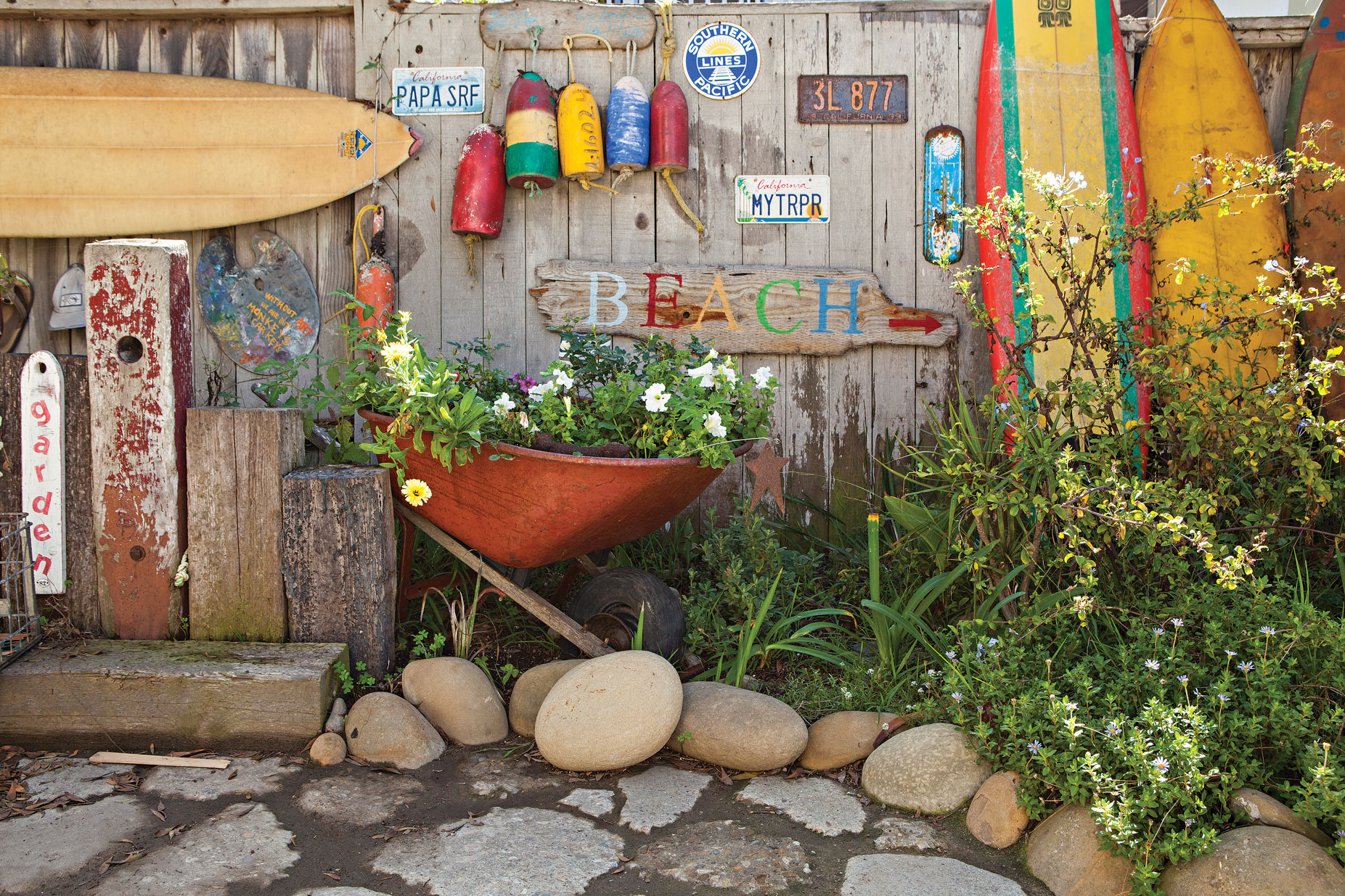
Carol decorates to tell the story of their lives and to harmonize with the moments and colors captured in her husband’s artwork. Few of the paintings gracing the cottage walls are there permanently. The décor needs to be flexible because artwork can leave just as often as it is hung. She is constantly arranging and rearranging the furniture and accessories, but this turnover suits her style, and she thrives on the ever-evolving nature of her beach cottage. “It’s a work in progress. I’m always redecorating, and I don’t think I’ll ever be finished,” she laughs. Her regularly changing interior keeps everyone looking forward to what will happen next.
Want some of Carol’s tips and advice for decorating with vintage? Click here to learn her secrets for creative vintage vignettes.

